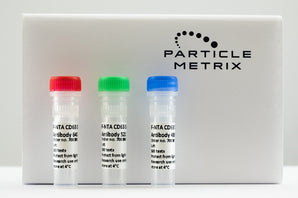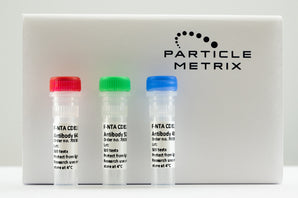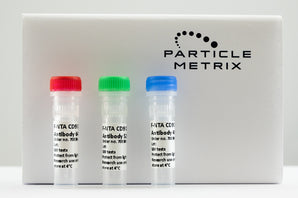Particle Size Distribution
Particle Size Distribution is a critical parameter for understanding the composition of particles in a sample in various applications. With Particle Metrix’s ZetaView® systems, you gain access to high-resolution particle size distribution measurements combined with multi-parameter analysis, ensuring accuracy, reproducibility, and advanced fluorescence capabilities for in-depth nanoparticle characterization.
What is Particle Size Distribution?
Particle Size Distribution refers to the measurement of the range and proportion of particle sizes within a sample. It provides detailed insights into how particles are distributed, helping researchers understand the composition and purity of samples, as well as the efficiency of isolation processes. This parameter is essential for monitoring consistency, purity, and functionality across diverse applications.
Analyzing particle size distribution helps researchers optimize formulations, detect aggregation, and fine-tune processes for improved performance. By understanding the size distribution of particles, industries can improve product quality and optimize production processes. Key Attributes of Particle Size Distribution Analysis:
Size Distribution Profiles: Deliver high-resolution data on the range of particle sizes, identifying trends like polydispersity or aggregation.
Subpopulation Detection: Differentiate and characterize distinct particle subgroups within complex mixtures.
Versatility Across Materials: Applicable to nanoparticles, biological particles, and synthetic materials.
Why is Particle Size Distribution important?
The particle size distribution of a sample is a significant indicator for the quality of isolation and purification processes. From pharmaceuticals to environmental science, understanding size distribution is key to ensuring product consistency, purity, and efficacy. For instance:
In pharmaceuticals, particle size affects the bioavailability and delivery efficiency of drugs.
In environmental science, size distribution predicts how particles behave in natural ecosystems, impacting sedimentation and pollutant transport.
In materials science, particle size distribution influences quality and overall performance of advanced materials.
Accurate particle size distribution analysis ensures reliable results, and helps maintain consistent product quality.
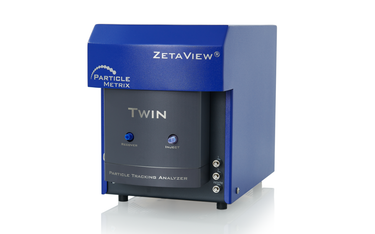
How to measure Particle Size Distribution?
Particle Size Distribution is measured using advanced analytical tools like the ZetaView® system from Particle Metrix. This system uses Nanoparticle Tracking Analysis (NTA) with high-resolution imaging to deliver precise particle size distribution data.
During measurement, individual particle movements are tracked using laser illumination and sensitive CMOS cameras. The Stokes-Einstein equation is then applied to convert the Brownian Motion of each individual particle into its hydrodynamic diameter, providing a detailed size distribution profile of the sample.

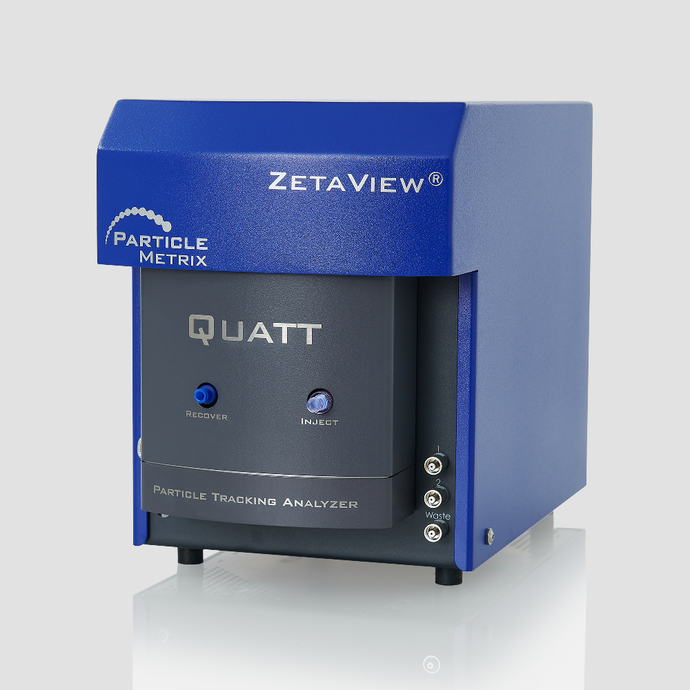
Advanced Particle Size Distribution Measurement with ZetaView®
The ZetaView® system offers precise and automated particle size distribution analysis, delivering comprehensive size profiles alongside multi-parameter measurements. Its integration with fluorescence capabilities allows researchers to study labeled subpopulations within complex samples, offering unmatched reliability and precision. Key advantages of ZetaView® for Particle Size Distribution analysis include:
Multi-Parameter Measurements Simultaneously measure particle size, concentration, and zeta potential for a complete sample profile.
High Sensitivity and Reproducibility
Consistent results, even with low concentrations and complex samples.
Advanced Fluorescence Capabilities
Combine size distribution analysis with fluorescence to identify specific subpopulations, such as extracellular vesicles.
Automated Sample Handling
Streamline workflows with minimal operator intervention, increasing efficiency.
Tailored Solutions for Complex Samples
Analyze challenging biological and synthetic materials with ease.

Applications of Particle Size Distribution Analysis
Particle Size Distribution analysis plays a crucial role across a range of industries, supporting research, development, and quality control:
Pharmaceuticals
Optimize drug formulations by ensuring uniform particle size for improved performance and bioavailability.
Biotechnology and Life Sciences: Evaluate the size distribution in samples containing biologically relevant particles, such as extracellular vesicles or liposomes.
Materials Science: Enhance the performance of catalysts, coatings or lubricants by understanding particle size properties.
Environmental Science: Predict nanoparticle behavior in water to assess their environmental impact.
Cosmetics: Monitor particle size distribution in lotions, emulsions, and powders to ensure product quality and functionality.

Let’s talk about your Particle Size Distribution Analysis needs
Interested in learning more about how particle size distribution analysis can advance your research or product development? Our team of experts at Particle Metrix is here to assist. We provide personalized consultations, system demos, and technical support to ensure you achieve your goals.
Frequently asked questions about Particle Size Distribution
What types of samples can be analyzed for particle size distribution?
Size distribution can be measured for all nanoparticles (e.g. extracellular vesicles, nano bubbles, nano metals) within a size range of 10* – 1000nm and a concentration range of 105 – 109 particles/ml.
(*sample and laser dependent)
What are the main advantages of using Particle Metrix’s technology for particle size distribution?
Our technology tracks the size of each individual particle, overcoming the bias towards large particles of intensity based measuring techniques like DLS. In addition, the design of our measurement cell allows the analysis of a large sample volume without the use of a syringe pump, ensuring results remain unaffected by liquid movement.
How do I ensure consistent and accurate particle size measurements?
The keys to ensuring reliable particle size measurements are a consistent sample preparation as well as the use of a suitable operation protocol as delivered during the instrument training. Additionally, integrated algorithms control consistent measurement conditions through the whole sample volume and indicate outliers.
Can the ZetaView® system measure fluorescently labeled particles?
Yes, the system supports fluorescence measurements, allowing detailed analysis of labeled subpopulations within your sample. Depending on the chosen model (MONO, TWIN, QUATT) and the number of implemented fluorescent filters, the ZetaView features the analysis of up to 10 different fluorescent channels.

